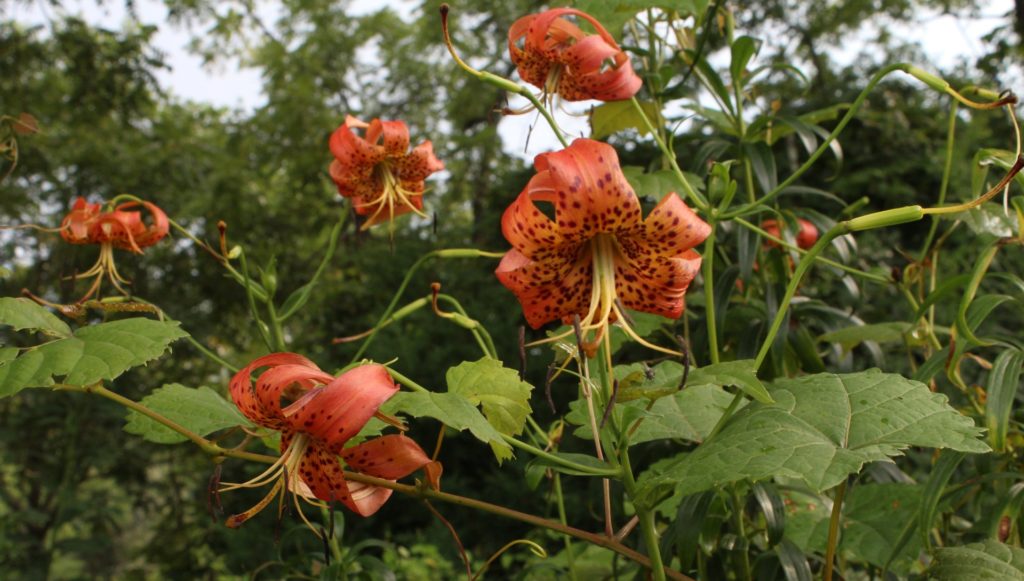Driving around the countryside you have to keep your eyes open because you never know what you’ll see. Recently, we saw a momma deer crossing the road with her two fawns, a few other deer here and there, a bald eagle sitting up high in a tree, and for me a new plant. One that I hadn’t seen before in real life.
We slowed down to look at a covered bridge and then stopped to take a few pictures. Right there next to the berm that used to be the old road leading to the bridge were a few blooming lilies. They were about 30 feet away from the bank of the stream that the bridge spanned.
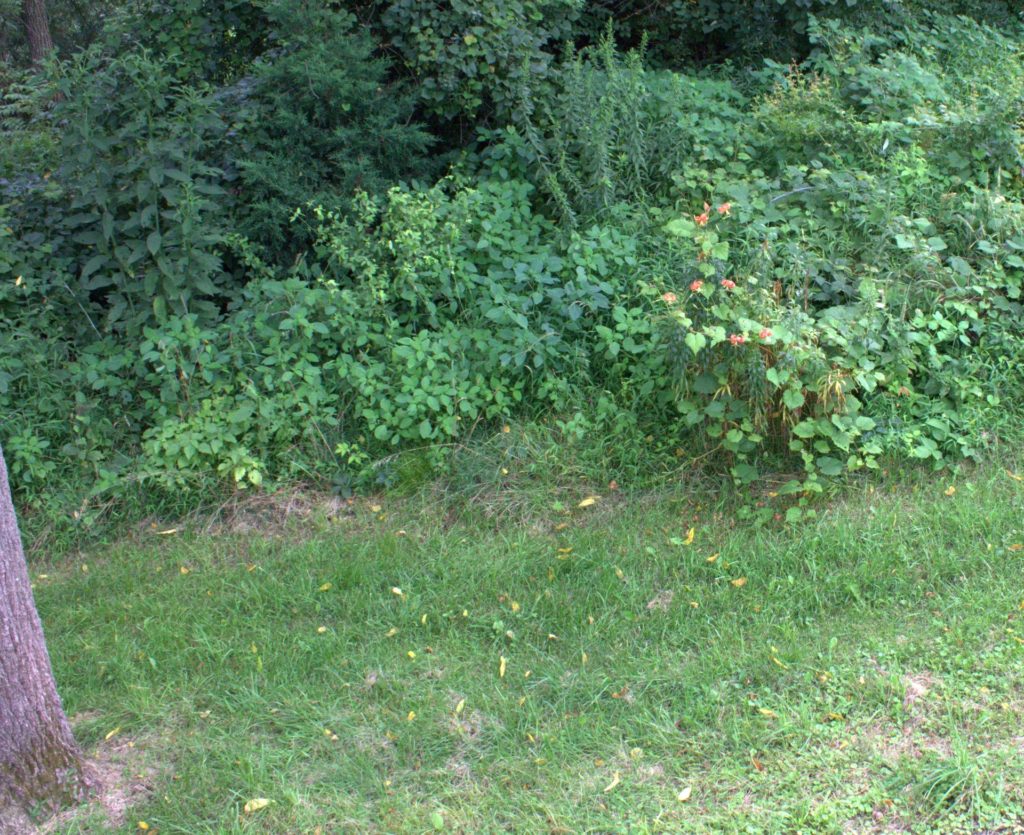
I recognized the Turk’s Cap Lily, Lilium superbum, from a distance, or at least I thought that’s what it was by the way the orange petals were swept back. I needed a closer look to be sure of the identification. What was the greenery like and how did the flowers look close up?
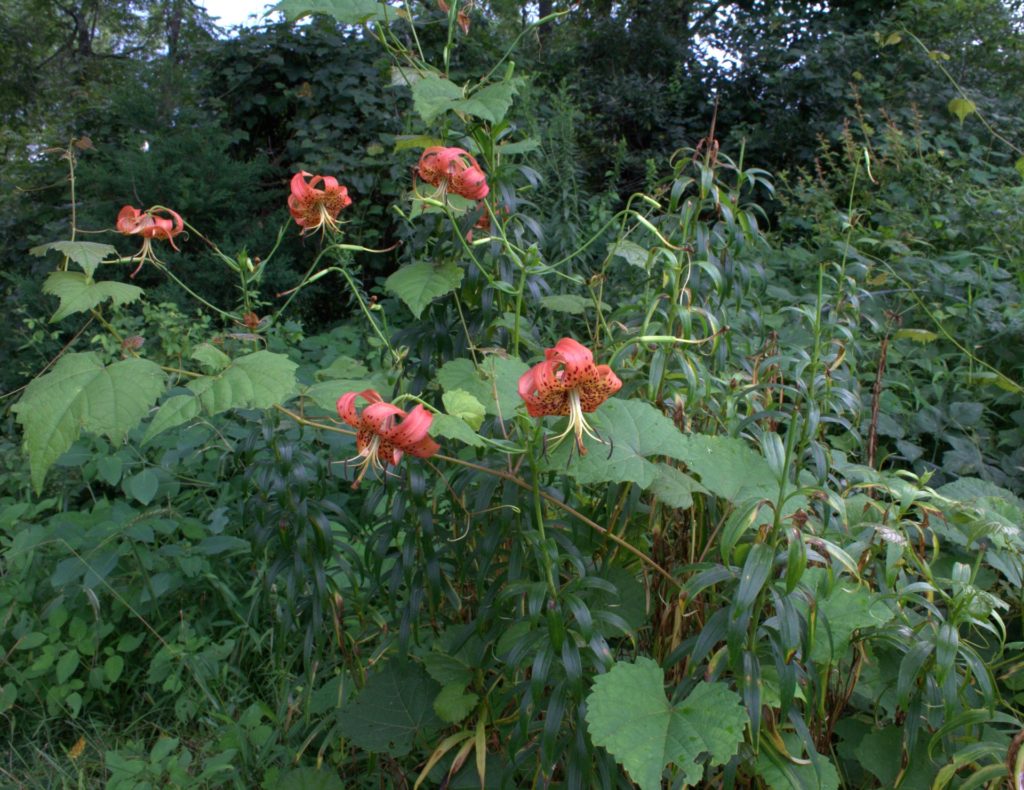
This stand of lilies contained plants that grew to various heights. You can see that some of the lilies grew quite tall, up to 6 feet or so, while others topped off at maybe 3 feet tall. Pay no attention to that grape vine growing wildly all through the lilies.
The covered bridge, known as Red Bridge, was built in 1886 in Liverpool, Perry County, Pennsylvania. (Unless noted, photos taken 3 August 2017. Click on an image to see a larger view.)
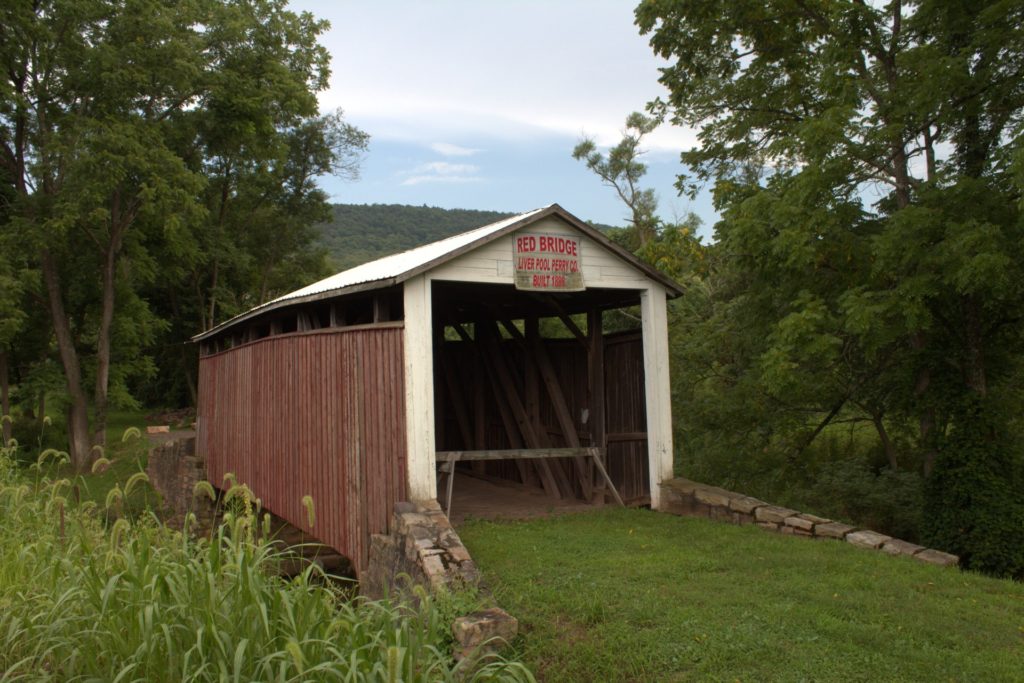
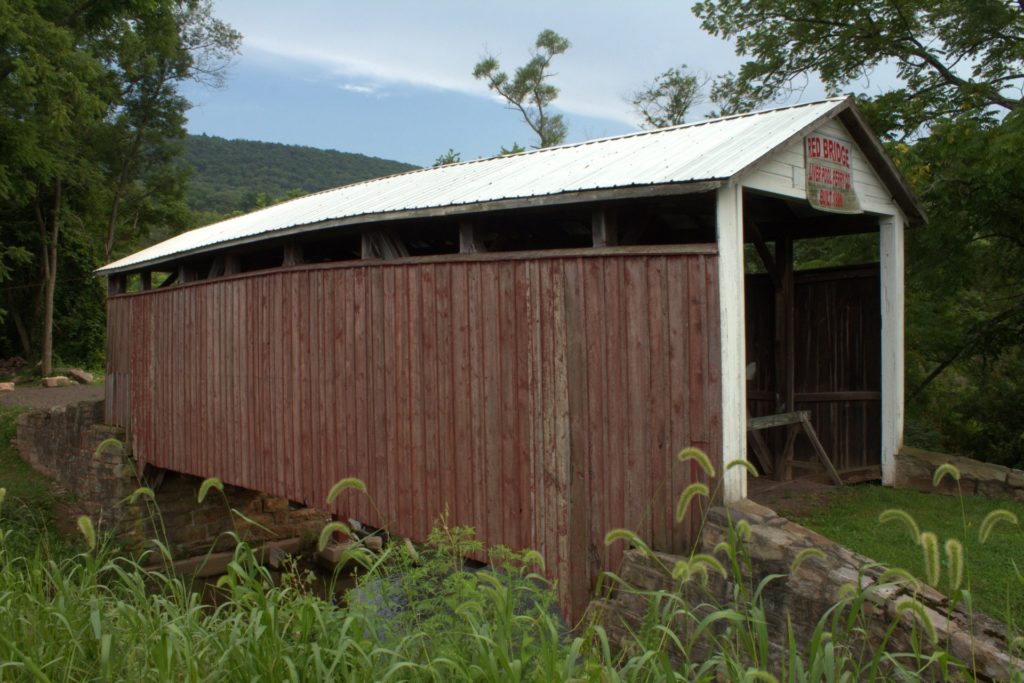
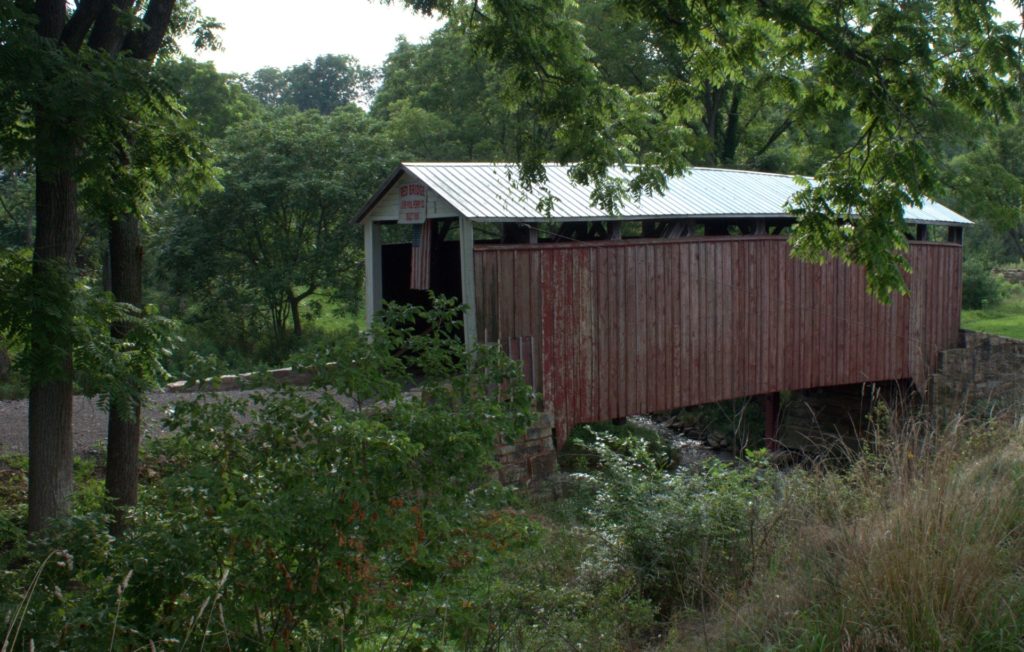
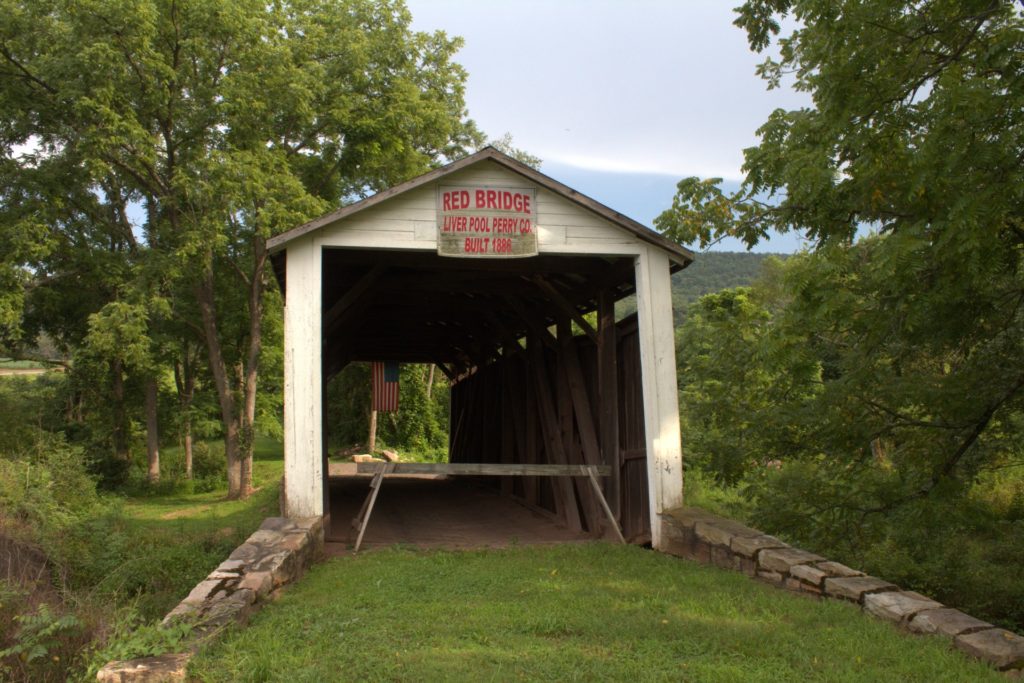
The stream that the bridge spans is known as “Bargers Run” and it flows into the Susquehanna River a couple of miles downstream. Here, we’re looking down on half of Bargers Run that takes mountain water to the Susquehanna River.
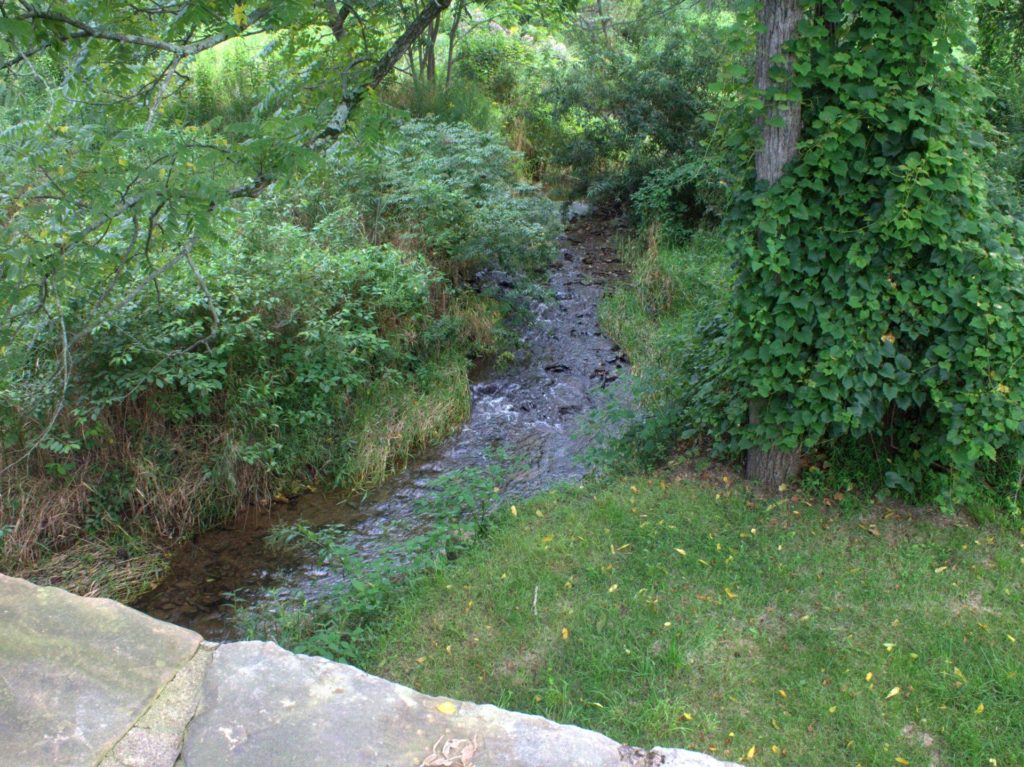
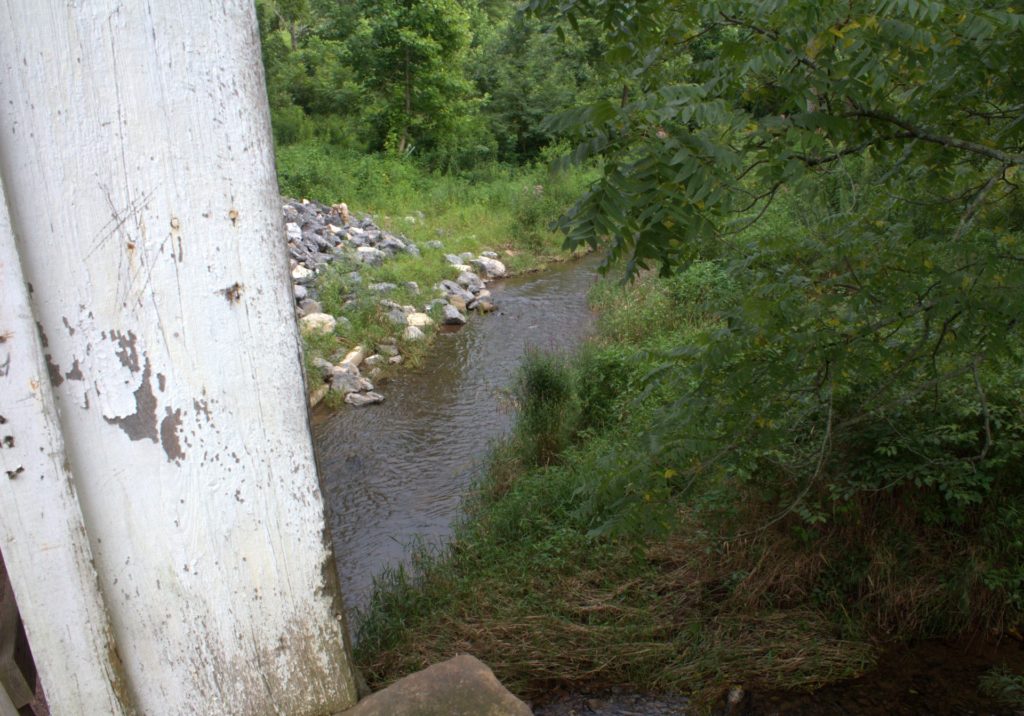
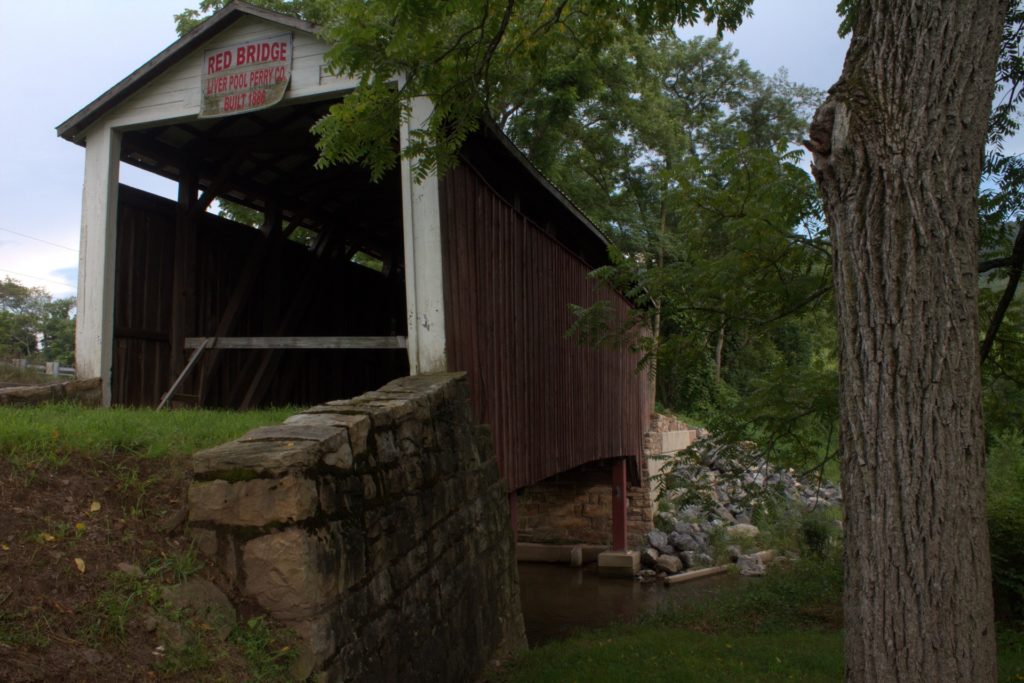
Blooming near the covered bridge the plant told me that it can take its feet being wet. Yes, according to Peterson’s Guide to Wildflowers, the Turk’s Cap likes to grow in wetlands, near streams and rivers. It’s America’s largest native lily and it occurs naturally in the eastern half of North America.
Each plant grows several flowers that mature at slightly different times. In this photo you can see a couple of open flowers and a couple of spent flowers that have dropped all their petals and stamens.
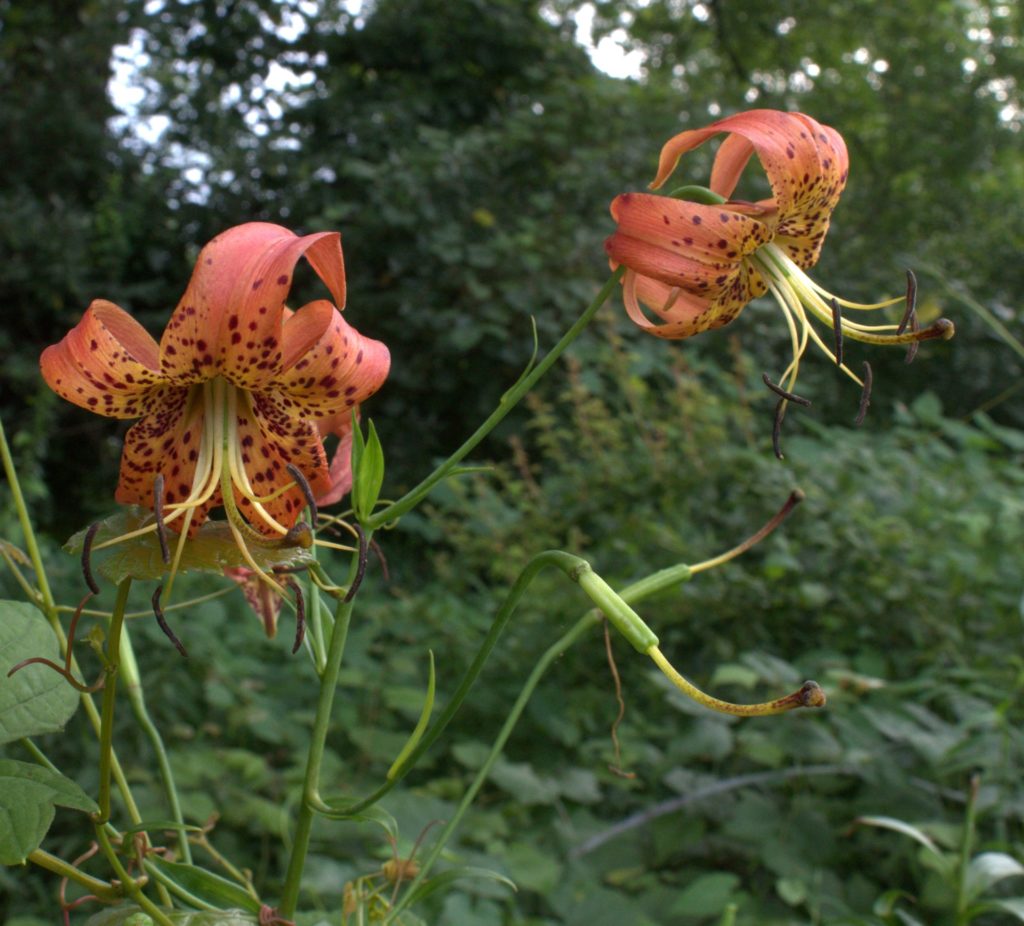
An identifying characteristic of the Turk’s Cap Lily are the purple-spotted orange petals and sepals.
The swept back petals gives the blooms a roundish appearance. The reflexed “petals” include three sepals, but when the petals and sepals are all colorful we tend to not make the distinction and just call them all petals.
This plant has two remaining flowers held over dark green whorls of pointed, ribbed, sword-like leaves.
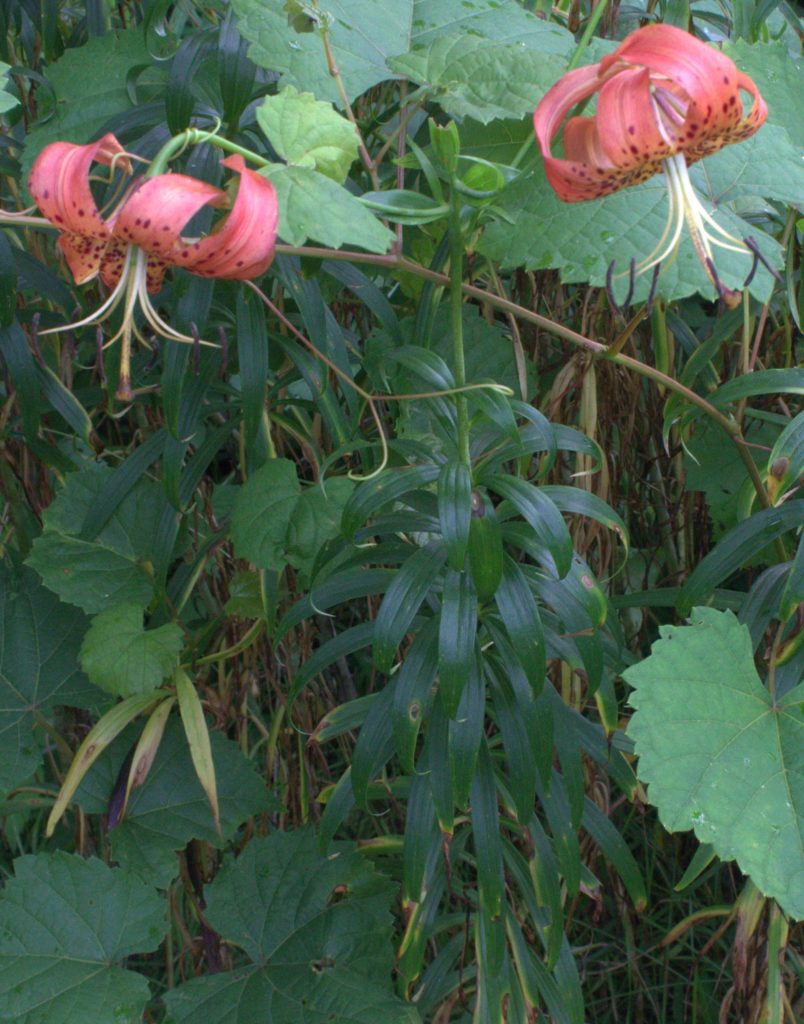
To identify the Turk’s Cap Lily look for the green star that appears in the center of the flower which is from a light green color near the base of the purple-spotted orange petals. A close relative called the Michigan Lily, Lilium michiganense, doesn’t have the green star and its flower is otherwise much like the Turk’s Cap.
The green star can partially be seen in this closeup image of the flower center.
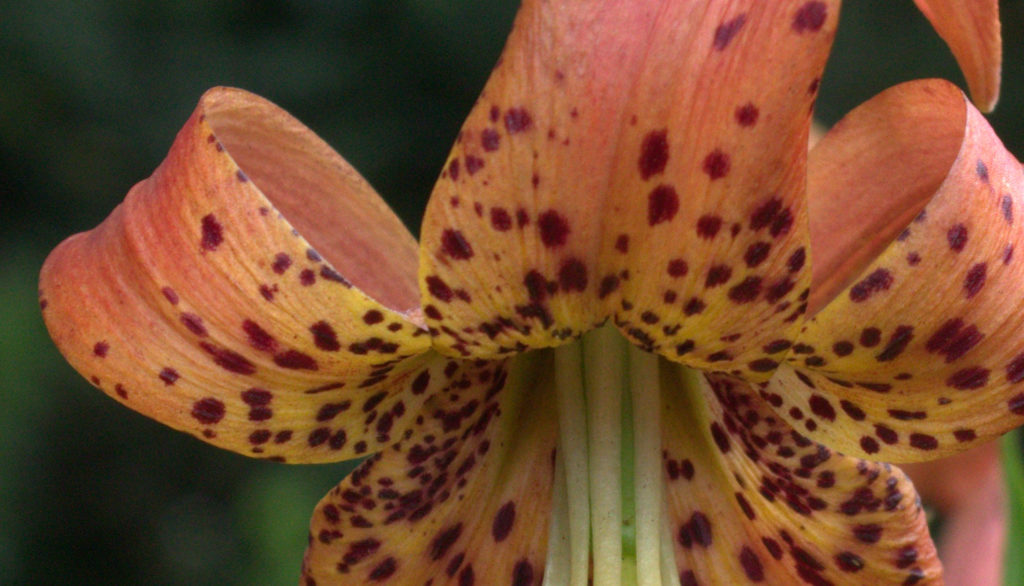
Each flower produces a single green elongated seedpod, like this one shown below as it existed in early August.
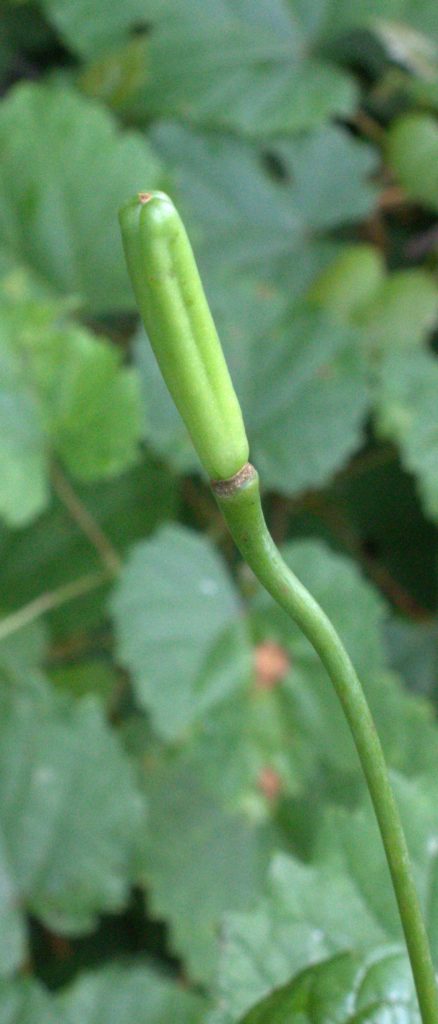
A frontal view of Turk’s Cap Lily highlights the purple-spotted petals.
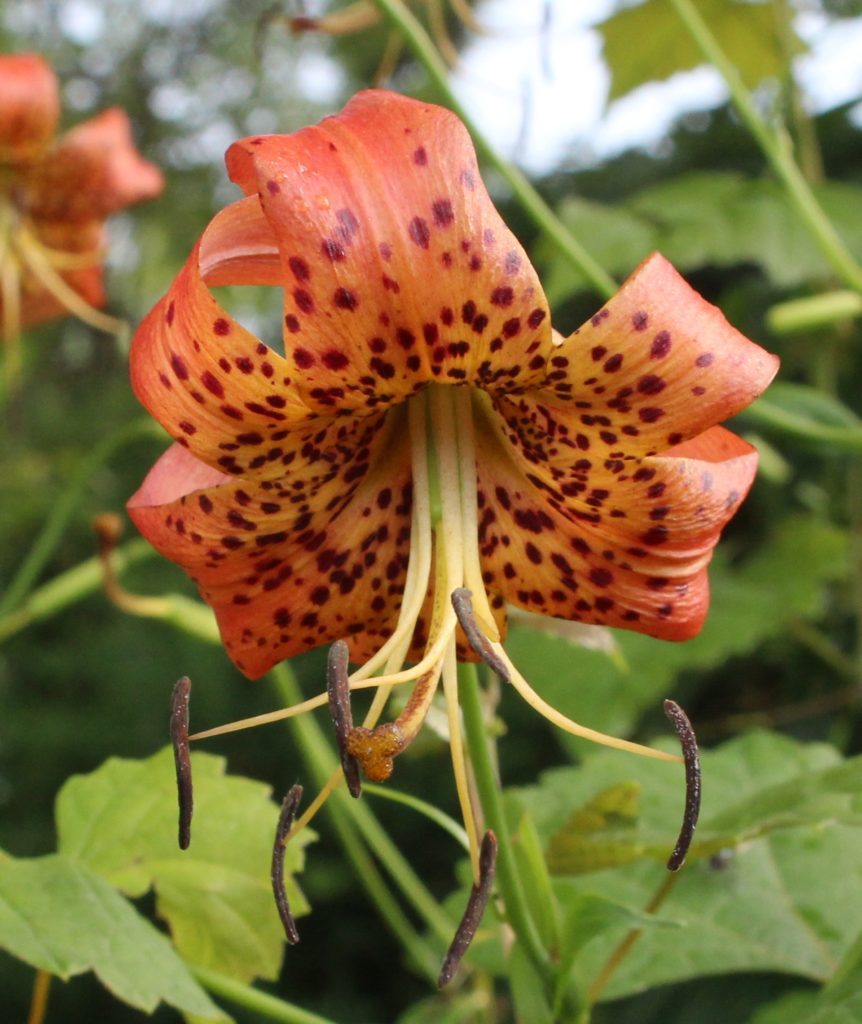
A side view of Turk’s Cap Lily shows the extension of the stamens and pistil well beyond the opening of the flower.
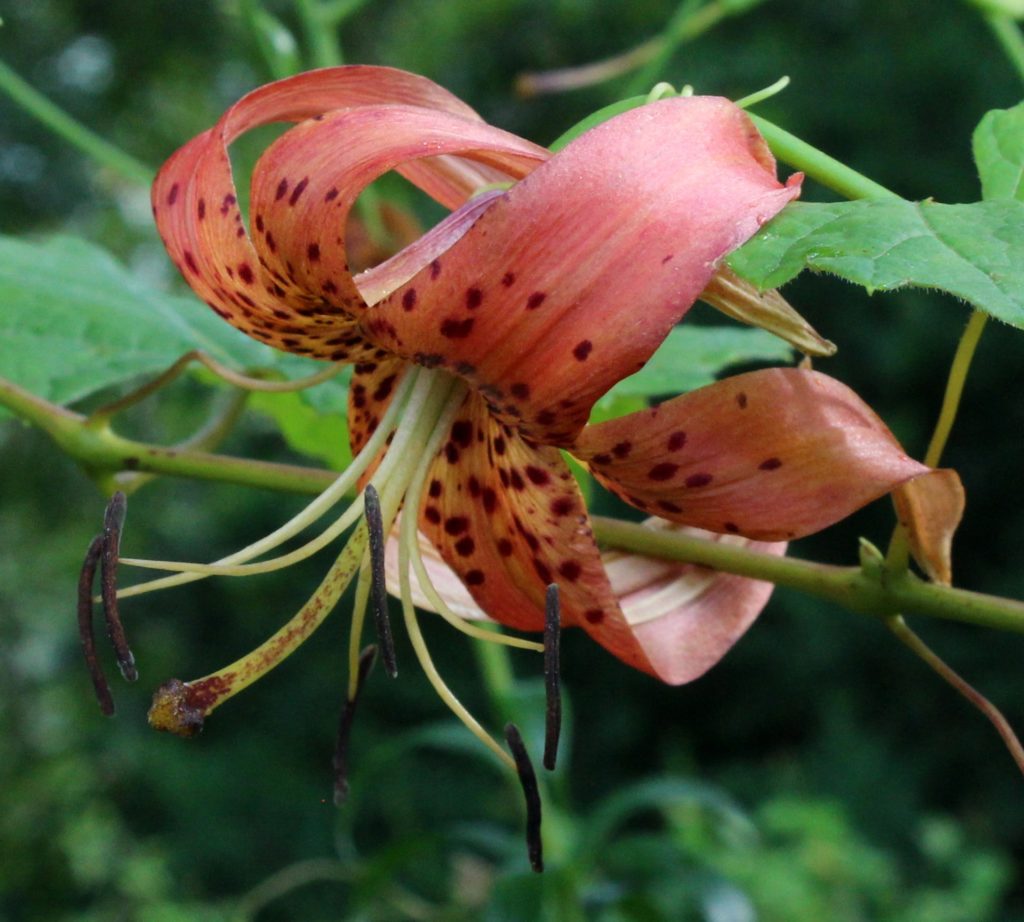
Everywhere around here in Central PA you can see a similar lily called the Day-lily, Hemerocallis fulva, blooming in June and July. As its name suggests each blossom lasts only one day. Three petals and three sepals are very noticeable because they’re orange, but unlike the Turk’s Cap Lily they’re not spotted nor are they swept back. Flowers of both plants have stamens that project well beyond the edge of the opening of the flowers.
Day-lilies are alien to North America having escaped gardens many years ago. These plants can be invasive and grow right next to the roadway. Pretty sure they’re there for the sunshine. Or is it the ditches with access to water that they’re after?
The Day-lily isn’t a true lily and it has no leaves on the flowering stems. Its long sword-like leaves might stretch more than a couple of feet long, whereas the Turk’s Cap Lily has much smaller leaves that are similarly shaped, but held in whorls on the flowering stem. More leaves are found in the lower whorls than near the top of the plant.
This photo of the Turk’s Cap Lily shows at least a dozen flowers or their future progeny.
